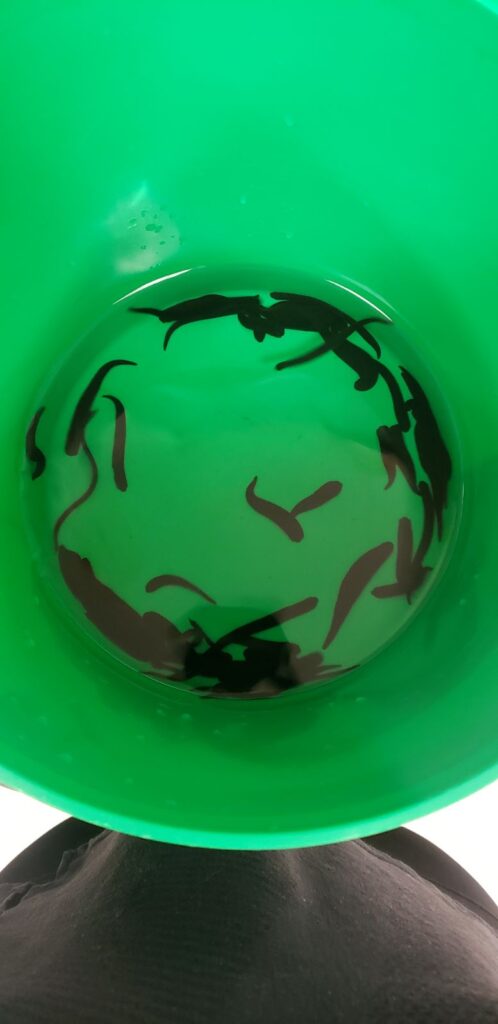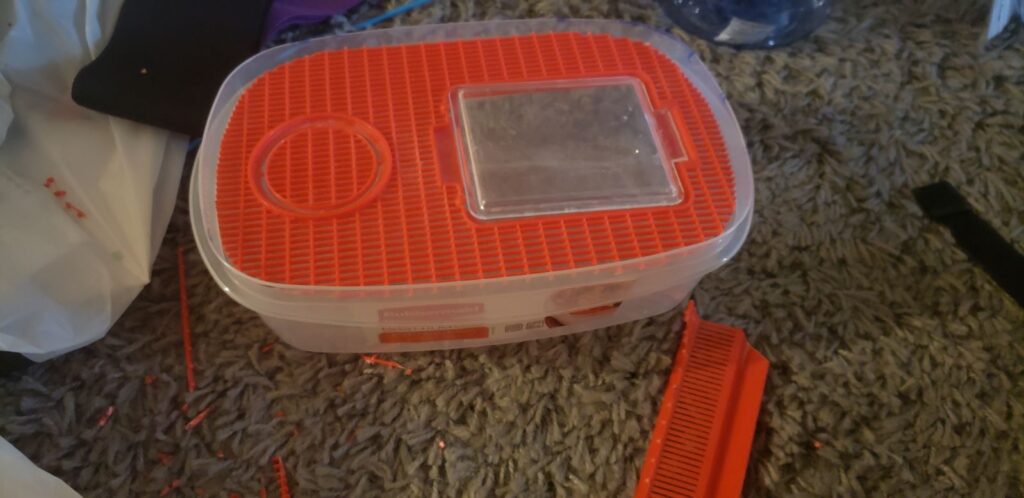I am a firm believer that for each scientific inquiry, there is an ideal species to test it. I refrain from saying “perfect species” because there will always be one facet or one characteristic of that species that will throw a wrench into the plan.
I had a beautiful experimental system to answer a very pointed research question: can animals eat so many microplastics that they trick themselves into thinking they are full? A dessert before dinner type of scenario – sure, there is ‘stuff’ in your stomach, but there are no nutrients there!
After working through the logistics of testing this hypothesis, the ideal species emerged: a leech. Why wasn’t this species perfect? Well, most people would immediately assume “because it would rather suck your blood than eat plastic”, but don’t worry, this species was carnivorous rather than blood-sucking. That stigma did fuel the first imperfection of this species: everyone seems to hate leeches, including those who fund research…thankfully the Alberta Conservation Association saw past the leech stigma! The second imperfection came from a characteristic of the species: they are escape artists!
I needed to design a system in which I could have leeches, sand, and water all in the same place at the same time, but then in some tanks prevent the leeches from accessing the sand. This design, known as a “sediment exclusion study”, is designed to determine how much of a contaminant an animal take in from the sediment (sand) versus the water. So, my task was to create a barrier between leeches and sand.

These leeches were not small. Surely it should not be hard to contain them, right…?
Wrong.
I often questioned if these leeches were made of liquid the way that they could fit through tiny gaps.
I started off with the obvious sediment exclusion tools – mesh barriers, fish breeding boxes, perforated tubes. And through these trying trials learned that not only would leeches find any fold, gap, imperfection, or seam and make a swift exit, they were also not afraid to just leave the water.
Apparently, survival was not important to them. Talk about a characteristic that would throw a wrench into my plan…
I sat with this problem for many days, perhaps weeks – during each of which more leeches would choose to voluntarily exit their perfectly clean, predator-free holding tanks where they were always well-fed and choose to explore the lab benches around them and sometimes the floor. Luckily for (most) of them, I clock a lot of lab hours and saved them from a desiccating demise only for them to show their appreciation by trying again.
Soft materials were out of the question for this task, and it was not until a neighbouring lab took out their trash that the solution was directly in front of my face. The lab had purchased a bunch of Critter Keepers – plastic small animal (rodent, likely) transport cages. They were using the bottoms of these to create a worm culturing system but had no use for the lids – a vented hard plastic mesh – and were discarding them. Jackpot.
It took me cutting through plastic for a few hours before I succumbed to the fact that a more powerful tool than basic school scissors would be required for this if I wanted to not have permanent numbness in my hand.

From my days repairing car bodies and painting planes, I knew aviation snips would cut even this thick plastic easily without cracking it.
Within hours, and zero dollars (my favourite price) I had the first ‘leech beach’ in which the sand was off limits!